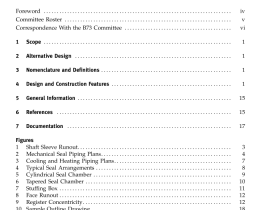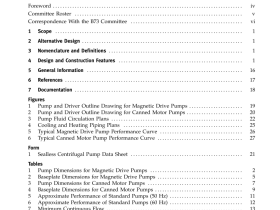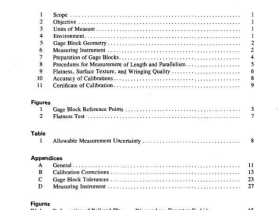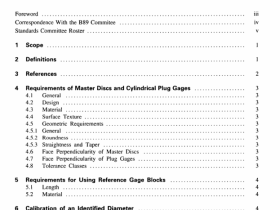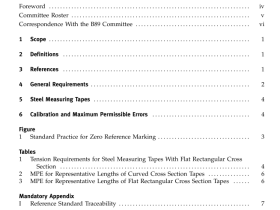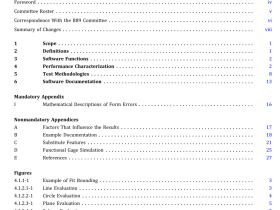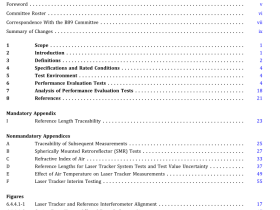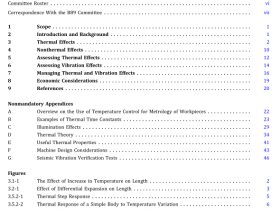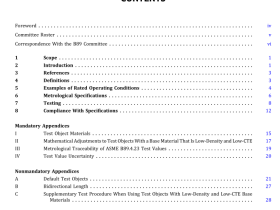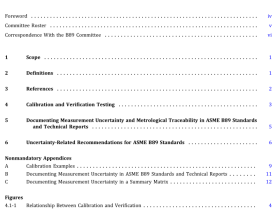ASME B5-8 pdf download
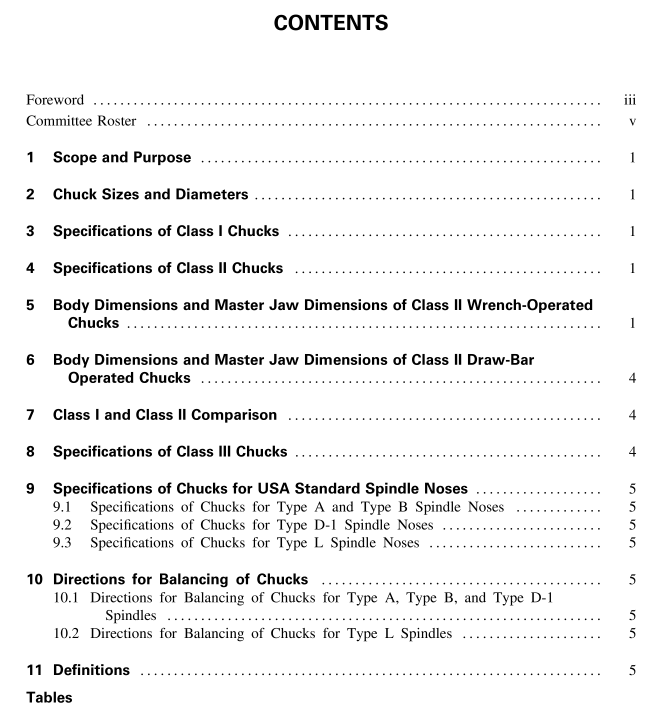
ASME B5-8 pdf download CHUCKS AND CHUCK JAWS
1 SCOPE
AND PURPOSE This Standard applies to chucks for use on engine lathes, tool room lathes, turret lathes, and automatic lathes and fit American Standard Spindle Noses of ANSI-B5.9-1967. They may be used on other applica- tions for which they are suitable (see pages 4 and 5 of ANSI-B5.9-1967). It is within the scope of this Standard to establish:
(a) duty classes
(b) standard chuck diameters
(c) top jaw interchangeability
(d) mounting interchangeability (USA-Standard Spindle Noses)
(e) draw-bar interchangeability for power chucks
(f) identification code for body, master jaws, top jaws dimensions, where interchangeability of chucks may be involved
(g) nomenclature
2 CHUCK SIZES AND DIAMETERS
The following table gives the approximate chuck body diameters of each size of standard chuck. All standard chucks with two jaws, three jaws, or four jaws, whether independent, self-centering, or combina- tion type, both wrench-operated and draw-bar operated, shall be made so that the outside diameter of the chuck body is one of these sizes. The name of each chuck shall be as given in the following table. For example, a chuck, the body of which is 6 1 ⁄ 2 in. in diameter, shall be known as a 6 in. chuck; one with a body 12 in. in diameter shall be known as a 12 in. chuck.
3 SPECIFICATIONS OF CLASS I CHUCKS Class I chucks are medium-duty, wrench-operated chucks with master jaws of the tongue-and-groove type for use on engine lathes and for other applications where the service is not severe. These chucks are provided with master jaws of the dimensions given in Table 1. The tops of the master jaws project above the face of the chucks in all sizes. The mating dimensions of top jaws for these chucks are given in Table 2. Standard three-step reversible top jaws for these chucks may or may not be made so that with the long gripping surface of the top jaws inwardly mounted, the top jaws and the master jaws will both grip a piece of bar stock inserted through the chuck. When the three-step jaws are reversed, the inner ends of top jaws may or may not have gripping surfaces. If they do, the ends of the master jaws project inward beyond the top jaws to provide a definite shoulder on the master jaw for locating any piece that may be gripped by the inner step of the top jaws. These chucks may have two or more jaws and may be of the independent, self-centering or combination type.
4 SPECIFICATIONS OF CLASS II CHUCKS Class II chucks are heavy-duty wrench-operated or draw-bar operated chucks with master jaws of the tongue-and-groove type for use on turret lathes and for other applications where the service is severe. These chucks are of stronger construction than Class I chucks. The wrench-operated chucks may be either hand oper- ated or power operated. The draw-bar operated chucks are actuated by an air cylinder, a hydraulic cylinder, or other means. These chucks may have two or more jaws, and may be of the independent, self-centering, or combination type.
